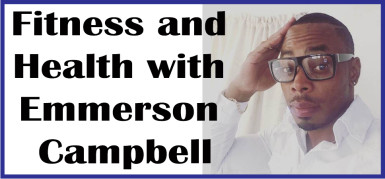Gym bag? Check. Water bottle? Check. Gloves? Check. Hair Tie? Check Snack? Maybe.
What and when to eat before and after a workout varies widely, with nutritional needs depending on your weight status, what food you’ve already eaten, and plans for subsequent meals in the hours after exercise. Understanding your individual dietary needs and learning to plan around your exercise routine is a crucial component of weight management and the fuelling process, no matter your goal.
Goal: weight loss
Since the beginning of the great obesity epidemic, the majority of gym-goers are exercising as part of a weight-loss regimen. Weight loss is dependent, first and foremost, on caloric regulation, rather than caloric expenditure.
In other words, what you eat matters more than what you do in the gym. It is far too easy to consume a high number of calories, and far too hard to expend those calories through exercise. In order to lose one pound, you must create a deficit of 3,500 calories. Consider that to create that deficit through diet, you would need to account for your calories and reduce your intake by 500 calories per day from your regular consumption. To expend the same number of calories, you would need to run 35 miles per week at a 10 min/mile pace, a feat unrealistic for many novice gym-goers.
If weight loss is your primary goal, it’s important that you plan carefully to prevent any additional caloric needs surrounding your exercise routine. The best method to prevent unnecessary snacking is to meal split. Meal splitting involves portioning meals so that you’re consuming 60-75% of a meal in the hours after exercise, having used 40-25% of that meal as a snack in the 90 minutes prior to exercise.
In lieu of splitting a meal, consider consuming smaller meals to leave room for a small, easily digested snack prior to exercise.
Goal: weight maintenance
In the absence of any specific weight-loss goal, many gym-goers are exercising for general health and weight maintenance. In order to prevent any unnecessary weight gain while still fuelling training, portioning meals and snacks is your best bet. Additional snacks, even seemingly healthy snacks, may negate the weight-moderating effects of the exercise itself.
For gym-goers for whom weight maintenance is a primary goal, meal-splitting (addressed above in weight loss) is an effective strategy.
Foods to favour and foods to avoid
In general, avoid fat and protein in the 90 minutes prior to a workout, as these nutrients slow digestion. Simple, easily digested foods are most easily digested and broken down for use during your workout. Additionally, while hydration is key, it’s a good idea to avoid a very high volume of liquid (smoothies, fruit juices, etc) which are easily regurgitated during a high-intensity workout.
Favour:
– Fresh fruit (bananas are especially popular for potassium content)
– Yogurt
– Whole-grain toast
– Simple, plain carbohydrate-rich foods
Avoid:
– High-volume liquids
– High-acid fruits, which may cause regurgitation
– Spicy foods, which may cause gastrointestinal distress.
Stay tuned, friends.
If you need help with building muscle or losing fat, shoot me an email: emmersoncampbell@gmail.com






